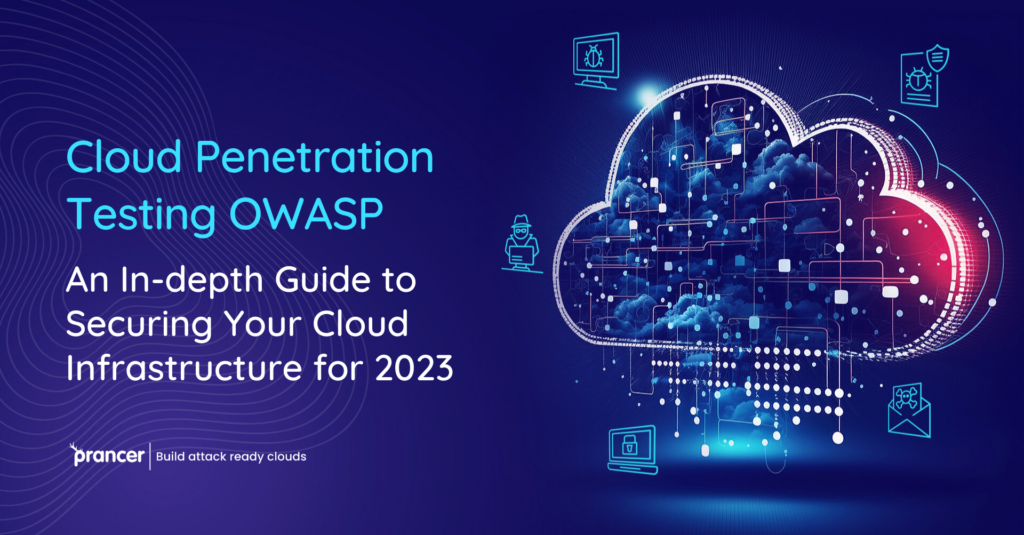
Embracing the Cloud: Prioritizing Security with OWASP Penetration Testing
In the ever-evolving digital landscape, the migration to cloud systems is more significant than ever. But with this great leap comes the pressing need for heightened security. Utilizing Cloud Penetration Testing, inspired by guidelines from the respected Open Web Application Security Project (OWASP), ensures we’re one step ahead.
In this comprehensive guide, we’ll venture into the heart of Cloud Automated Penetration Testing by OWASP, outlining its foundation, methodologies, and how Prancer strengthens our cloud defenses.
Decoding Cloud Penetration Testing via OWASP
OWASP’s Cloud Penetration Testing involves in-depth examinations of cloud systems, applications, and services using OWASP’s renowned security benchmarks. By integrating these robust standards, businesses can detect and fix vulnerabilities, ensuring they’re less attractive to cyber threats.
Key Pillars of Cloud Penetration Testing Inspired by OWASP
- Spotting Unique Cloud Risks: With their dynamic and interconnected nature, cloud environments come with specific challenges, such as cloud-native application vulnerabilities and insecure configurations. By focusing on these cloud-centric concerns, we ensure a holistic approach to security.
- Double-checking Cloud Configurations: Configuration reviews are essential. Minor misconfigurations can escalate, leading to data breaches or unauthorized access. Following OWASP’s path ensures these configurations stand up to scrutiny.
- Assessing Varied Cloud Environments: Recognizing that many businesses now rely on multi-cloud or hybrid solutions, all aspects of these intricate infrastructures are assessed regardless of the service provider.
- Delving into Serverless Architecture: As serverless computing becomes more common, this method involves close examinations of its components to ensure they’re watertight against potential security flaws.
OWASP’s Penetration Testing Blueprint
- Reconnaissance: This initial phase involves gathering as much information as possible about the cloud setup to spot potential vulnerabilities.
- Assessing Vulnerabilities: Here, recognized flaws within the cloud assets are pinpointed using tools that OWASP recommends.
- Exploitation: The identified vulnerabilities are tested by simulating unauthorized access attempts.
- Analyzing Data Exposure Risks: This step evaluates the potential repercussions if data is exposed during a security breach.
Prancer’s Role in this Ecosystem
As a distinguished player in cloud security, Prancer bridges the gap for organizations wanting to execute effective OWASP-inspired Cloud Automated Penetration Testing. Its platform ensures compliance with OWASP’s strict standards, offering automated scanning and continuous updates. Plus, Prancer’s harmonization with popular development tools means that integrating consistent security assessments into regular processes is simpler than ever.
Final Thoughts
In today’s cyber-focused world, adopting Cloud Penetration Testing inspired by OWASP isn’t just good practice—it’s essential. By incorporating its fundamental principles and working with partners like Prancer, businesses can reinforce their defenses in the cloud space. Looking ahead, this approach not only ensures security but paves the way for future digital success.
Read More: The Best Security Camera System for Business
With a solid foundation in technology, backed by a BIT degree, Lucas Noah has carved a niche for himself in the world of content creation and digital storytelling. Currently lending his expertise to Creative Outrank LLC and Oceana Express LLC, Lucas has become a... Read more